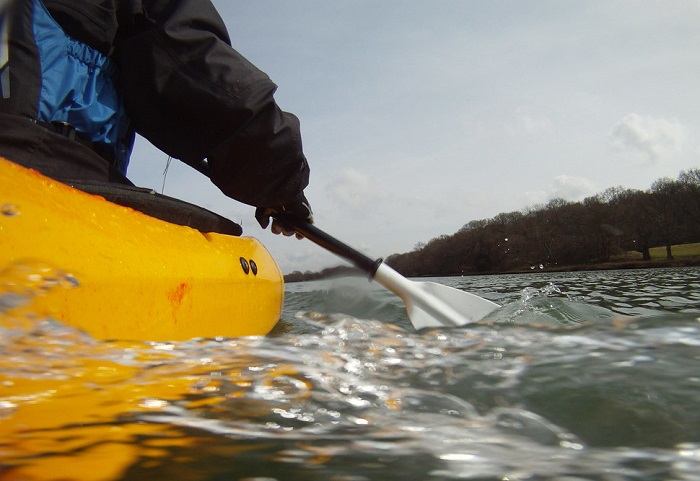Know How to Identify Different Whitewater River Features
A whitewater paddler’s knowledge of whitewater kayaking river features obviously should not stop at the basic whitewater river features terms. Within every feature, there are varying degrees and nuances that distinguish between even features of the same type. This is a list of those more advanced terms that are used to describe whitewater kayaking river features.
Whitewater Ripples or Riffles
Guide books and scouting reports will often refer to ripples or riffles to describe a section of the river. Ripples are exactly what they sound like, small patterns like disturbances in the water. Riffles, while a little less descript, they refer to a very similar thing. Riffles are like mini waves or a section of choppy water. Riffles and ripples generally refer to Class II stretches of whitewater.
Boogie Water
If a paddler uses the term boogie water they are referring to a continuous section of whitewater with lots of waves and holes. This is more than just a wave train. Expect no break in the action for a distance of at least a hundred yards, but generally for a much longer distance.
Eddy Line
While eddys were covered in the basic whitewater features to know, eddy lines were not. An eddy line is the area of river in-between an eddy and the flowing part of the river. The river is flowing in one direction and the eddy is flowing in the other direction. Where these two opposing currents meet next to each other they form an eddy line. Eddy lines are “squirly” sections to cross in and out of.
Whirlpool
Whirlpools are whitewater river features that can form in eddy lines. As the opposing flows of water flow next to each other they can create a spinning effect that forms a whirlpool. Whirlpools look like a spiral in the water that can suck paddlers and boats down into the water.
Horizon Line
As a paddler approaches a drop they usually can’t see the river below. This makes the drop itself look like a line going across the river. This is called a horizon line. A kayaker, canoeist, or rafter should never paddle over a horizon line without knowing what is on the other side of it. While nearly all river features can be dangerous, this list of whitewater river features is particularly dangerous.
Rooster tail
A rooster tail refers to a narrow section or line of water in a wave that shoots up or curls up out of the wave. It looks like a rooster tail. Rooster tails usually indicate that there is an extra disturbance under the water, usually near the surface, that is causing this additional feature.
Tongue
The tongue of a wave is the part of the face of a wave where the water seems to flow best. Waves are not always smooth. They often are crashing at their peaks and toward their sides. The tongue can be where the two sides of a wave come together near the center of the wave or it can be the smoothest part of the wave. Whatever characteristic the tongue has for a specific wave it will be the smoothest most direct way for a paddler to get through the wave.
Slot
A slot is a term that whitewater kayakers will use to refer to a narrow section between two boulders or between a boulder or the bank of the river. Slots are often only a couple of boat widths wide if that.
Chute
A chute is like a slot, except it generally is used to describe a slot that leads into a drop. Chutes can have holes or waves at the other side.
Pool-drop
This phrase can be misleading. The word “pool” is before “drop,” leading one to believe that this is the order in which the river features will be encountered. However when a whitewater paddler uses the phrase pool-drop, they are referring to a drop that falls into a pool. This is significant, as whitewater kayakers and canoeists want to know if they will have recovery time upon surfacing from a drop, should they flip over or be off balance.
Pillow
A pillow of water is a spot on the river that rises up above the surface of the river and sheds water radially in all directions.
Undercut or Pinning Rock
An undercut describes any feature on a river where a boater can get caught under. Undercuts are usually found in gorges where the river flows along a rock wall.
Strainer
A strainer in whitewater refers to an obstruction in the water, usually a collection of debris or tree branches, where the river is constricted while flowing through it. Strainers strain the river from things that are floating or submerged in it, including swimmers. Stay away from strainers.

